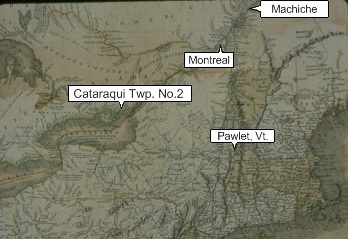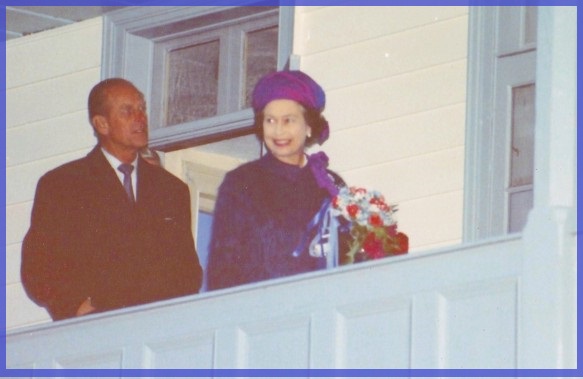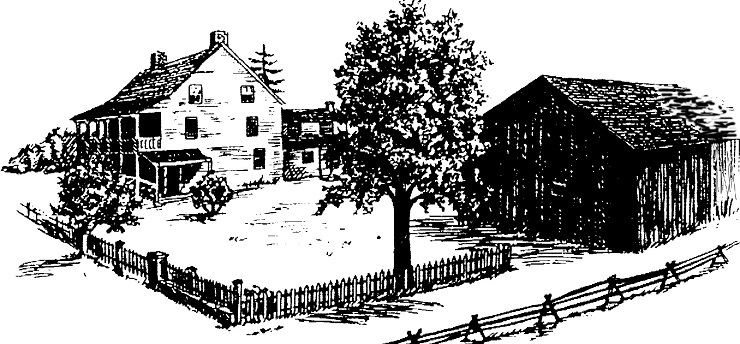|
|
The Fairfields Build a New Life
After the war, the British government relocated hundreds of Loyalist families in the wilderness west
of the long settled area of Quebec. Nine townships were surveyed along the St. Lawrence River
and five at the eastern end of Lake Ontario. Batteaux loaded with Loyalists and supplies started moving up the St. Lawrence in June 1784. At their new townships, men were given grants of land to convert to farms.
As Loyalists, William Fairfield, Abigail, and nine Fairfield children came to Cataraqui Township No. 2, the second township on Lake Ontario west of the Cataraqui River. Cataraqui Township No. 2 was renamed Ernestown Township upon formation of Upper Canada in 1791.
Among the lots William Fairfield received in 1784 was Lot 37 on the lakefront. The October 1784 muster records William as “on his land” with 2 acres cleared.
By 1793, the Fairfields had added the farmhouse that would be the homestead for the family for 180 years.
The house reflects the traditional building practices of artisans from inland New England, who had learned
their skills before 1775 when war interrupted civilian lives. Building materials – limestone, white oak,
white pine, and cedar – were all at hand. Forest dominated Fairfield's acres. The white oak post-and-beam frame was clad with pine clapboards and the roof covered with cedar shingles.
By the 1790s, the lakefront road joining Kingston with the farms and settlements to the west passed in front
of the Fairfield farmhouse. Minor modifications to the east front room of the house allowed the Fairfields to
take advantage of their location to operate a licenced tavern, starting in 1802. Otherwise, the Loyalist house remained
with little physical change until the 1860s.
In 1805, William gave the farm to his son Stephen. The house was the home for William, Abigail, Stephen with his wife and two children. Stephen both farmed
and kept the inn. The house passed to Stephen's son, Harmon, who occupied it from the 1830s until his death in 1891.
By 1860, Harmon no longer operated an inn or tavern.
The verandahs were built across the front of the house and new bedrooms added over the kitchen. Several of Harmon's children lived on the farm for
their lifetimes. His son Thomas, with his wife Torie, returned to the house for retirement.
|

 ABOUT US
ABOUT US  HISTORY
HISTORY NEWSLETTERS
NEWSLETTERS GET INVOLVED
GET INVOLVED TOURS
TOURS CONTACT US
CONTACT US


